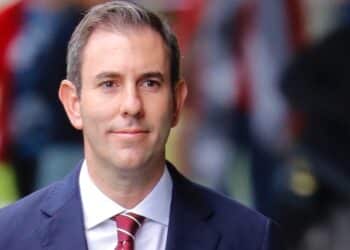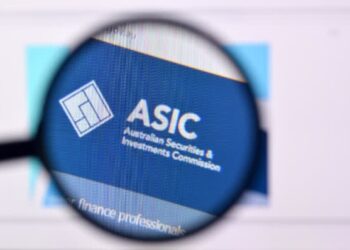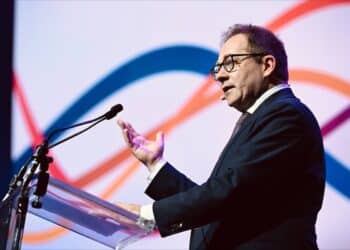The package launched on Thursday morning, alongside the $2 billion drought and bushfire relief from earlier this year is worth around 1 per cent of Australia’s GDP and will mostly be occurring between March and June, in the government’s attempt to dodge negative growth for the June quarter.
The stimulus is projected to have a $22.9 billion impact, with it including an accelerated depreciation scheme, a cash flow boost of up to $25,000 for small and medium-sized businesses, and wage assistance for apprentices and trainees.
Households receiving government assistance – primarily pensioners – will also receive payments of $750.
AMP Capital called the package “decent” but not strong enough to ward off a domestic recession. Senior economist Diana Mousina predicted the impact of the bushfires as around 0.7 per cent of GDP along with pointing to a hit to growth from lower Chinese tourist and education spending.
“June quarter GDP growth will be impacted by the rest of the world (ex-China) dealing with the coronavirus and we see a eurozone and US recession also this year which will be another negative impact to Australian export growth,” Ms Mousina said in her analysis.
“On top of that, any further outbreak of the virus domestically will slow spending broadly.”
But she noted, the stimulus will help in limiting the depth of the recession and in preventing unemployment from rising too far.
James McIntyre, economist at Bloomberg Economics and former economic adviser to the Prime Minister’s office expects the government will need to release a second package, similar to how the Rudd government rolled out a second stimulus to help the economy recover following the global financial crisis.
The initial package in 2009, adjusted for inflation, was around the same size and percentage of GDP as the Morrison coronavirus response – but the design between the two is different.
“When it does come time, once the virus is contained, whether that be June or July or August when we begin to think about normalising the economy, we’re going to need another stimulus,” Mr McIntyre said.
The second Rudd package post-GFC, which was more infrastructure focused and aimed to kickstart the economy’s momentum, was $43 billion worth of stimulus spending. Mr McIntyre has estimated for a 2020 fiscal stimulus package to be of the same size, it would need to be around $70 billion.
He also cautioned that the isolation measures that health experts are calling for, in order to contain the contagion, will flatten not only the spread of the virus, but also the economy, with people not going out and spending.
“That March quarter’s likely to be negative, but because of the potential for the virus to disrupt domestic economic activity, and begin to see that social distancing, which is what the health experts say is required to manage the the outbreak within Australia. That does come at a very significant economic cost,” Mr McIntyre said.
“From a health perspective, we’re requiring people to self-quarantine, practice social isolation measures, [start] working from home, [with] interruptions to business… Now is not the time to put cash in people’s hands, I would have thought more broadly.
“I think the time for that might come once we have managed to contain and flatten the virus curve, seen that outbreaks of the virus or new cases becoming more manageable for health systems and as a whole on a much broader range the population has encountered, defeated the virus and built up the natural immunity. Getting the economy moving again – that stimulus, I think, is yet to come.”
Meanwhile the Australian Banking Association has backed the new stimulus, with chief executive Anna Bligh calling it a “welcome shot in the arm” that will keep the economy strong.
Consumer confidence down as uncertainty rises
Mr McIntyre noted in his 20 years as an economist, he never thought he would forecast an Australian recession. While the RBA has made a more optimistic prediction for the upcoming June quarter, he has extrapolated negative growth, even with a “short sharp fiscal stimulus”.
“At the beginning of this week, I put out an updated forecast for the Australian economy forecasts and in that forecast and it’s something that I never thought I would have to do,” he said at a briefing on Thursday.
“The last Australian recession Australia had was in 1991. So, we’re now on our 29th year of unbroken economic growth, or at least we were.”
The Melbourne Institute and Westpac bank Consumer Sentiment Index for Australia was at a five-year low of 91.9 in February from 95.5 in the previous month.
“There’s a real uncertainty …around what might happen for Australia’s economy through this coronavirus outbreak. I have at the moment a forecast of the Australian economy to contract again in the June quarter,” Mr McIntyre said.
“[Consumer confidence] has taken a massive dive as the outbreak has intensified globally. And we begin to see the subsequent escalation of the warnings and messages from our own chief health officer and Prime Minister and governments around the country about what’s what needs to be done.
“That uncertainty… alongside disruptions, quarantines and distancing, over the course of the coming months, that is likely to really put a dent in, in consumer spending. Consumers don’t spend when they’re uncertain, and particularly when they’re uncertain about their employment.”
He added consumer expectations around unemployment for the year ahead had risen to global financial crisis levels.
“Now when people are scared about their jobs, scared about the economy and uncertain in general, they feel it’s not exactly a great time to buy a household good,” he said.
“We haven’t seen it that bad since consumers were pulling their heads in through the GFC.”
Economists disappointed in reliance on monetary policy
The fiscal stimulus has followed the government’s acceleration of infrastructure spending which it launched last year, around $4.2 billion of acceleration spending.
“Really, it wasn’t much,” Mr McIntyre commented.
“The Australian government has much to the disappointment and dismay is of many economists, including myself, but also the Reserve Bank of Australia has really held back on stimulating the Australian economy at a time when monetary policy is being led to do a lot of the work.”
He along with a number of other economists is pointing to another incoming rate cut from the RBA, following this month’s decrease to 0.5 per cent, and further quantitative easing action.
It seems that the choice method of QE would be yield curve control, as the Reserve Bank flagged last year along with other potential policies, Mr McIntyre and Ms Mousina both noted.
Yield curve control would see the RBA seek a flattened bond yield curve by targeting a specific level of yields, then buying bonds if they line up with the targets.
NAB economists have tipped the policy will be in action by May or June.
But Ms Mousina has said Thursday’s stimulus may allow the RBA to wait longer before implementing quantitative easing.



